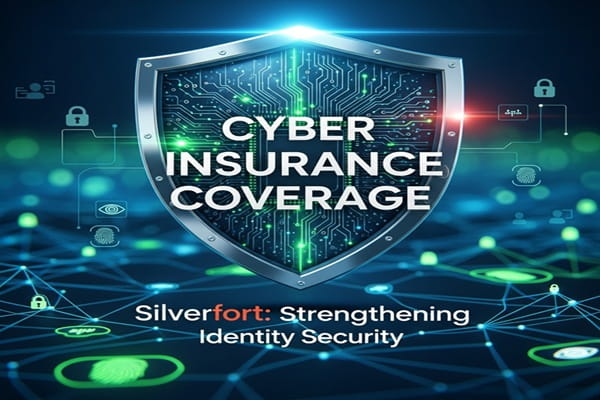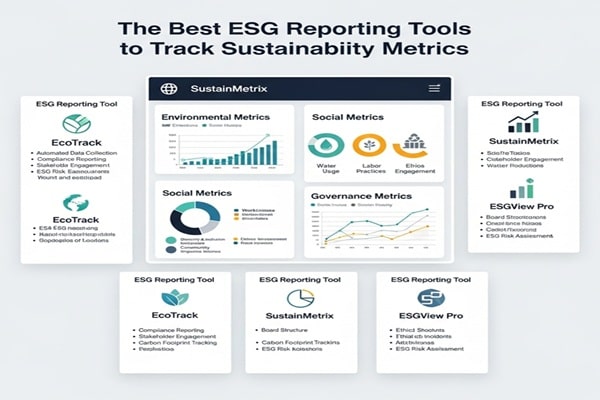Cyberattacks aren’t slowing down—in fact, they’re hitting businesses harder than ever. Ransomware, phishing, and data breaches are no longer “what if” scenarios; they’re everyday realities. That’s why more companies are turning to cyber insurance coverage to protect themselves from the financial fallout.
But here’s the catch: insurance providers are tightening their requirements. It’s no longer enough to simply buy a policy. Today, you need to prove you’ve got strong security controls in place—especially when it comes to identity and access management.
That’s where Silverfort comes in. This powerful platform helps businesses not only qualify for cyber insurance but also reduce premiums, strengthen compliance, and defend against costly breaches.
In this guide, we’ll break down:
-
What cyber insurance actually covers
-
Why insurers care so much about identity security
-
How Silverfort closes the gaps traditional tools leave behind
-
The exact insurance requirements Silverfort helps meet
-
Real-world use cases that prove its value
-
How using Silverfort can even lower your premiums
If you’re wondering how to stay insurable in today’s cyber risk landscape, keep reading—this might be the missing piece your business needs.
What Exactly Is Cyber Insurance (and Why Do You Need It)?
Think of cyber insurance as a financial safety net for your business. If a hacker gets in, steals your data, locks your systems with ransomware, or causes downtime, insurance can help cover the costs.
Most cyber insurance coverage includes:
-
Data breach costs (like investigation, recovery, and notifications)
-
Ransomware payments (and negotiations, if needed)
-
Business interruption (lost revenue when systems go down)
-
Legal fees and regulatory fines
-
PR and recovery costs (managing reputational fallout)
Sounds great, right? Here’s the twist: insurers aren’t just handing out policies to anyone anymore. They expect you to prove you’ve taken real steps to secure your business—especially around identity access and authentication.
Why Identity Security Is the Key to Cyber Insurance
Here’s a sobering fact: over 80% of cyber breaches start with compromised credentials. That means stolen passwords, misused accounts, or insider threats—not some Hollywood-style hacking.
Attackers use identity-based tactics like:
-
Phishing emails to steal login details
-
Brute-force attacks on login portals
-
Lateral movement across systems once inside
-
Exploiting service accounts that often fly under the radar
Because of this, insurers are laser-focused on identity security. They want to see:
-
Multi-factor authentication (MFA) everywhere
-
Zero Trust access policies
-
Visibility into identity activity
-
Controls for legacy and non-human accounts
And that’s where most companies hit a wall—because their existing tools can’t cover everything.
Meet Silverfort: Closing the Identity Security Gaps
Silverfort is like the missing puzzle piece for modern identity protection. Unlike traditional MFA or IAM tools, Silverfort extends security to every user, system, and environment—even the ones most solutions can’t reach.
The magic lies in its agentless, proxyless architecture. In plain English, that means you don’t need to install heavy software or rewrite legacy systems. Instead, Silverfort integrates directly with identity providers like Active Directory to enforce policies everywhere.
Here’s what it covers:
-
Legacy apps and command-line tools
-
VPNs, RDP, and remote access
-
Service accounts and machine identities
-
On-prem and cloud environments
In short: if it authenticates, Silverfort can protect it.
How Silverfort Helps You Qualify for Cyber Insurance
Now let’s connect the dots. How exactly does Silverfort make you more attractive to insurers (and maybe even lower your premiums)?
1. Enforcing MFA Everywhere
Insurers demand MFA for all admin accounts and remote access. Silverfort makes it possible—even on systems that never supported MFA before. That means:
-
Adaptive MFA based on user behavior
-
MFA for command-line tools and legacy apps
-
Consistent enforcement across hybrid environments
2. Enabling Zero Trust Access
Forget “trust but verify.” Zero Trust means never trust, always verify. Silverfort brings Zero Trust to life with:
-
Step-up authentication for sensitive actions
-
Conditional access rules based on context
-
Just-in-time controls for admins and service accounts
These are exactly the kinds of controls insurers love to see.
3. Monitoring and Logging Identity Activity
If an incident happens, insurers want proof you were enforcing security. Silverfort gives you:
-
Centralized logs of all access attempts
-
Real-time alerts for suspicious behavior
-
Evidence to support claims and audits
4. Reducing the Identity Attack Surface
Service accounts, legacy apps, unmanaged systems—these are prime attack targets. Silverfort protects them, shrinking your overall risk and boosting insurer confidence.
Cyber Insurance Requirements Silverfort Helps You Meet
Here’s a quick cheat sheet showing how Silverfort checks the boxes insurers care about most:
| Cyber Insurance Requirement | How Silverfort Delivers |
|---|---|
| MFA on all remote access | Agentless, adaptive MFA |
| MFA for admin accounts | Policy-based enforcement |
| Legacy/custom app protection | MFA without code changes |
| Logging and monitoring | Centralized auditing and alerts |
| Zero Trust architecture | Risk-based access control |
The more boxes you tick, the stronger your policy—and the better your coverage terms.
Real-World Scenarios Where Silverfort Makes the Difference
Let’s look at a few examples.
Legacy Infrastructure Challenge
A global enterprise with old systems struggled to apply MFA. Silverfort added MFA to legacy apps without rewrites, satisfying insurer requirements.
Remote Workforce Security
A hybrid company needed to secure VPN and RDP access. Silverfort enforced adaptive MFA, stopping credential-stuffing attacks cold.
Zero Trust Mandates
An insurer required Zero Trust controls. Silverfort’s continuous verification made compliance straightforward.
Audit-Ready Logging
After a breach attempt, Silverfort’s detailed logs provided proof of security controls—helping validate an insurance claim.
Also Read : NSCorp Mainframe: Powering Norfolk Southern’s Digital Backbone
Why Insurers Are Taking Notice of Silverfort
It’s not just companies that benefit. Insurers themselves are recognizing the value of solutions like Silverfort. Some even recommend it during underwriting.
Benefits include:
-
Lower risk (fewer claims to pay)
-
Faster claims validation (thanks to logs)
-
Incentives like lower premiums or broader coverage for insured companies
Basically, adopting Silverfort shows insurers you’re serious about security.
The Future of Cyber Insurance and Identity Security
Looking ahead, the bond between cyber insurance and identity protection will only get stronger. Expect to see:
-
More emphasis on Zero Trust frameworks
-
Continuous security monitoring as a policy requirement
-
Dynamic underwriting based on live risk scoring
-
Pre-breach audits before coverage approval
Silverfort is already aligned with these trends, making it a future-proof investment.
Final Thoughts: Don’t Just Buy Insurance—Earn It
Here’s the bottom line: buying cyber insurance isn’t enough anymore. If you can’t prove you’ve locked down identity and access security, you’ll either pay sky-high premiums or get denied altogether.
Silverfort changes the game by giving you:
-
MFA everywhere (yes, even legacy apps)
-
Zero Trust access policies
-
Full visibility and audit-ready logs
-
Protection for human and non-human identities
With these capabilities, you’re not just checking a box for insurers—you’re actually preventing the very breaches that lead to costly claims.
So, if you want to qualify for cyber insurance, reduce premiums, and sleep easier knowing your business is protected, Silverfort is the partner worth having.




